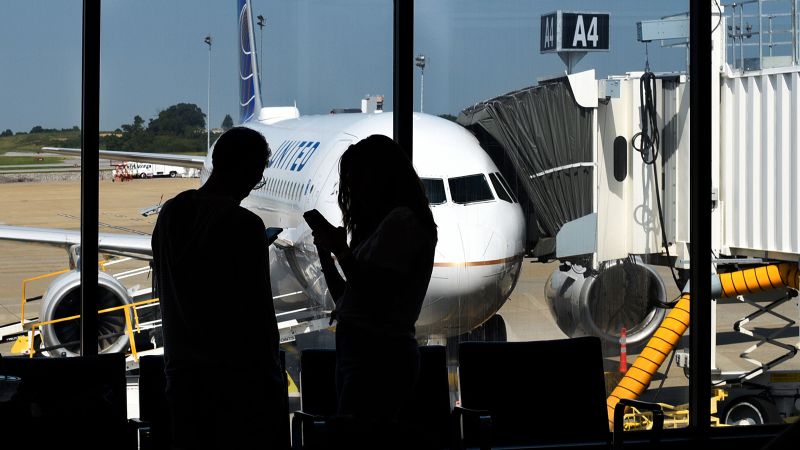Cell phones are not allowed to be used while on a plane because they can interfere with the airplane’s navigation instruments and cause various safety and social issues.
As soon as the plane lands, we’re permitted to turn off flight mode, but at some airports we can’t get much of a signal. That’s because airports are known as phone signal “dead zones” due to a lack of mobile towers – they can’t be placed at the airport itself due to height restrictions.
Any nearby cell towers would be located away from the airport’s runway systems to avoid interfering with the airplane’s flight path, especially takeoff and landing direction. Most airports put up indoor repeater antennas within the airport terminal; these help increase the phone signal strength coming from the nearest cell tower somewhere near the airport.
But you won’t be allowed to make calls while walking away from the plane, anyway.
Why can’t I use my phone?
As we are taxiing in, the cabin crew remind us not to smoke outside of designated areas at the terminal and not to use our cell phones until we are inside the terminal building.
If you exit the plane down the rear stairs, why aren’t you allowed to use your phone once away from the airplane, if you can get a signal? Surely it won’t affect navigation.
The answer is manifold, and regulations aren’t the same across the world.
In my home country of Australia, a government regulation prohibits the use of cell phones on the runway or the airplane parking area of the airport.
You won’t be fined if you whip your phone out while walking to the terminal, but the airline may admonish you for not following the rules. However, if you decide to run around on or near the runway, you could get arrested by federal police.
The airport apron is very busy not just with aircraft, but also baggage carts, catering trucks, airplane waste removal trucks and fuel trucks. Getting passengers off the airfield apron and into the terminal building quickly and safely is a priority for the staff.
If you are distracted while walking to the terminal building because you’re talking on your phone, it can be highly dangerous and even deadly if you end up too close to an operating plane. An operating jet engine is extremely hot and has a strong exhaust. Additionally, the front of the engine has a low-pressure area called an ingestion zone that can suck in a person. Ground staff are trained to stay at least 10 meters away from this area. However, this information is not shared with the passengers.
A myth about fuel
You may have heard that cell phones are a fire hazard near fuel, and airplanes are, of course, refueled at airports.
However, the chances of fuel catching fire during this process are extremely low, because the refueling truck is bonded and “grounded” to the plane: the operator attaches a wire to the aircraft to move built-up static electricity to the ground to prevent any chance of a spark.
There have been stories in the press about cell phones sparking fires at petrol stations in Indonesia and Australia, but these turned out to be inaccurate. There is no evidence a phone can spark a fire at a fuel pump, despite the warning labels you might see.
Either way, the chances of a mobile phone causing this on the ground with a refueling truck that is grounded to the airplane are extremely low, not least because the passenger-permitted areas and refueling areas are completely separated.
Why are we told not to take photos?
This rule varies from airport to airport depending on their security processes.
Such restrictions are carryovers from the changes to airport security following the September 11, 2001 terrorist attacks. The now federalized security teams, TSA (Transportation Security Administration) in the United States and the Department of Home Affairs in Australia, change their processes frequently to prevent having any identifiable patterns that could be used to create a security breach.
The increased security measures also mean new technologies were introduced; airport security sections do not want photos taken of how they operate.
The airport security process is a major choke point in the flow of passenger movement due to the screening process. If a passenger is perceived to be slowing the process down by taking photos or talking on their phone, they will be reminded to turn off their device and/or stop taking photos of security personnel and equipment.
If you refuse to follow the rules of the screening process, you will be denied entry into the airport terminal gate area and miss your flight. Can you also get arrested for using your phone? Depends on the airport and country. I, for one, do not want to find out.
Editor’s Note: Doug Drury is professor/head of aviation at CQUniversity Australia.







































